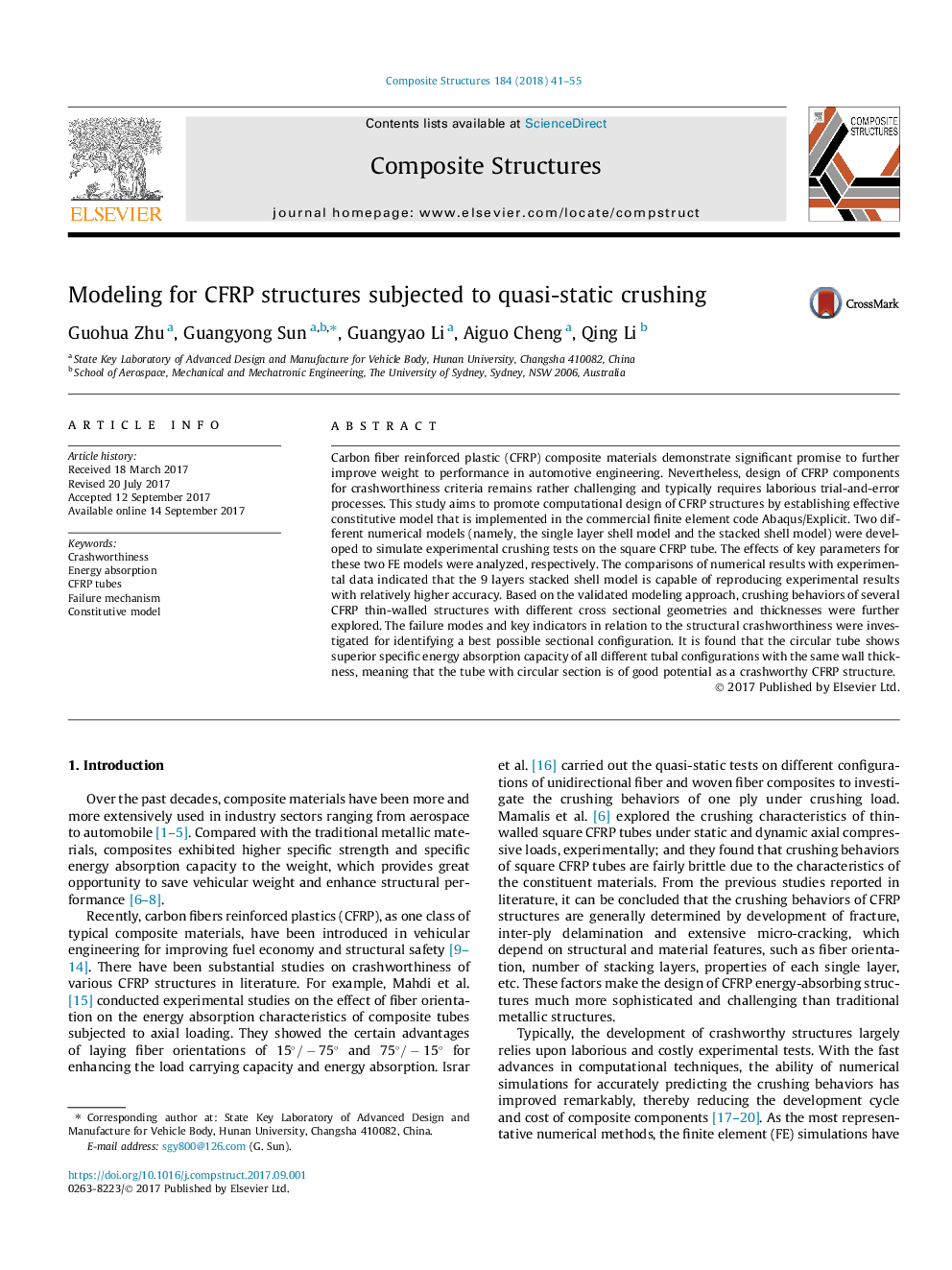| کد مقاله | کد نشریه | سال انتشار | مقاله انگلیسی | نسخه تمام متن |
|---|---|---|---|---|
| 4917565 | 1428523 | 2018 | 15 صفحه PDF | دانلود رایگان |

Carbon fiber reinforced plastic (CFRP) composite materials demonstrate significant promise to further improve weight to performance in automotive engineering. Nevertheless, design of CFRP components for crashworthiness criteria remains rather challenging and typically requires laborious trial-and-error processes. This study aims to promote computational design of CFRP structures by establishing effective constitutive model that is implemented in the commercial finite element code Abaqus/Explicit. Two different numerical models (namely, the single layer shell model and the stacked shell model) were developed to simulate experimental crushing tests on the square CFRP tube. The effects of key parameters for these two FE models were analyzed, respectively. The comparisons of numerical results with experimental data indicated that the 9 layers stacked shell model is capable of reproducing experimental results with relatively higher accuracy. Based on the validated modeling approach, crushing behaviors of several CFRP thin-walled structures with different cross sectional geometries and thicknesses were further explored. The failure modes and key indicators in relation to the structural crashworthiness were investigated for identifying a best possible sectional configuration. It is found that the circular tube shows superior specific energy absorption capacity of all different tubal configurations with the same wall thickness, meaning that the tube with circular section is of good potential as a crashworthy CFRP structure.
Journal: Composite Structures - Volume 184, 15 January 2018, Pages 41-55